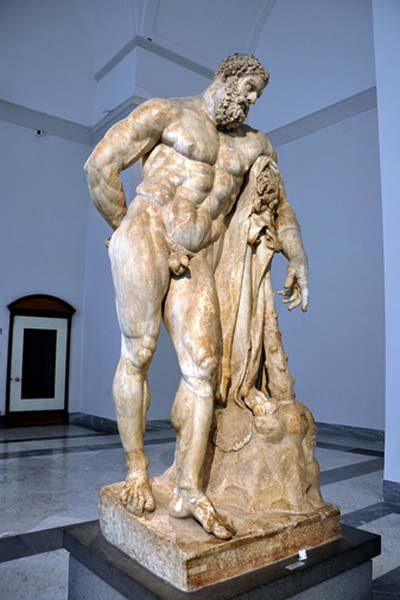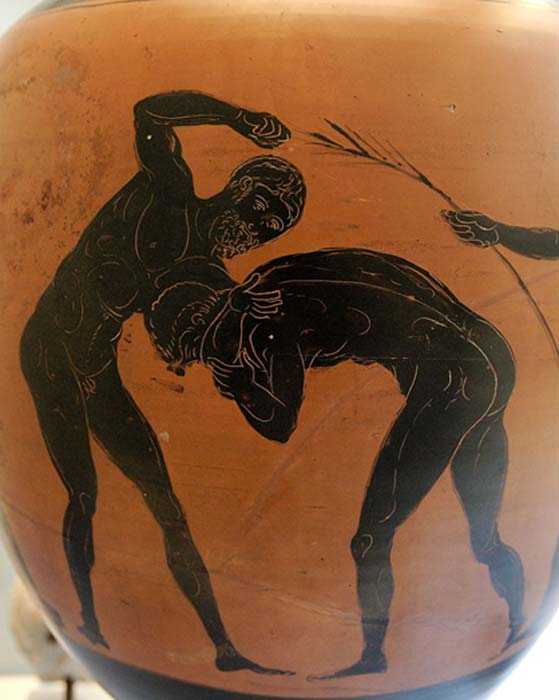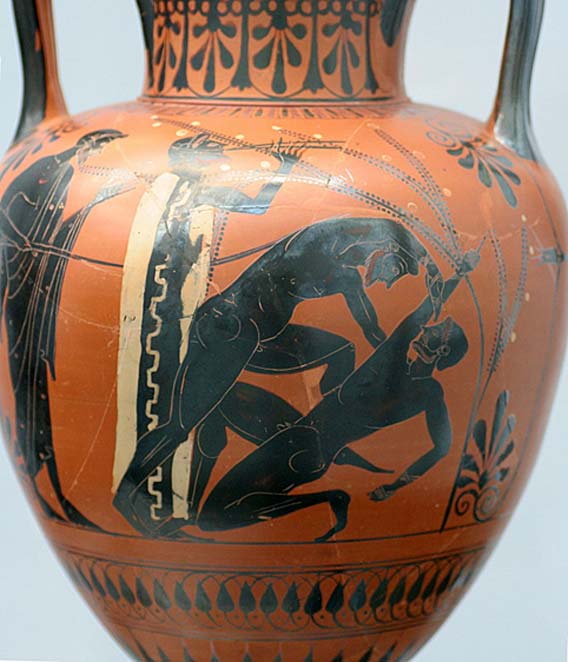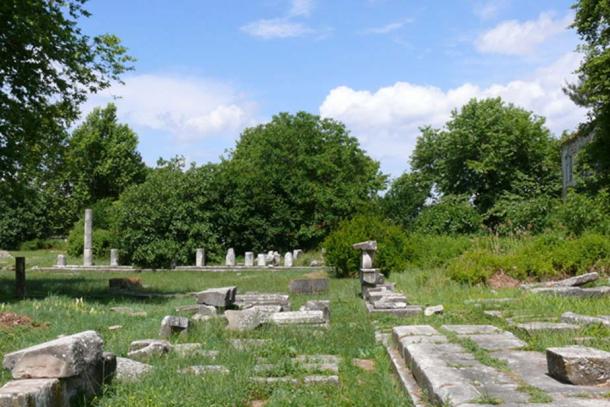Ancients - Theagenes of Thasos: From Legendary Olympic Fighter to God-Healer
Theagenes was born in Thasos around 500 BC (or 505 BC according to some sources) and was meant to become one of the most dominant and famous competitive fighters that ever lived. His impact while competing was so great that after his death he was worshipped as a god-healer. Some, impressed by his amazing athletic accomplishments, even believed that he wasn’t a mortal, but the son of a god.
Theagenes’ Rise to Fame at Young Age (Not for a Good reason)
In reality though, his father was just a humble priest named Timosthenes, who was trying to raise his son in his footsteps. Theagenes, however, had different plans. When he was only nine years old he stole a bronze statue of a god (possibly Zeus) and carried it to his home in order to impress his parents. Many locals didn’t look kindly on his action and were furious at the blasphemous act of the young boy - they wanted to execute him. Thankfully, the older and wiser citizens of Thasos, impressed with the young boy’s power, decided that carrying the statue back to its original position was punishment enough for Theagenes. The news spread all over Greece and Theagenes became a notorious figure for his incredible power and disrespect for the Gods. His childhood adventures are historically recorded and described best by Greek historian Pausanias,
- Hermas as Guidance and Protection for Travelers in Ancient Greece
- Since Ancient Greece, the Olympics and Bribery Have Gone Hand in Hand
- Worshipers, Rule-Breakers and Champions: Women and the Ancient Greek Olympics
“Not far from the kings stands a Thasian, Theagenes the son of Timosthenes. The Thasians say that Timosthenes was not the father of Theagenes, but a priest of the Thasian Heracles, a phantom of whom in the likeness of Timosthenes had intercourse with the mother of Theagenes. In his ninth year, they say, as he was going home from school, he was attracted by a bronze image of some god or other in the marketplace; so he caught up the image, placed it on one of his shoulders and carried it home. The citizens were enraged at what he had done, but one of them, a respected man of advanced years, bade them not to kill the lad, and ordered him to carry the image from his home back again to the market-place. This he did, and at once became famous for his strength, his feat being noised abroad through-out Greece.”

One of the most famous depictions of Heracles, originally by Lysippos. (CC BY 2.0)
Theagenes Becomes an Olympic Champion
The young boy from Thasos eventually became a man; but not just an ordinary man. Often described as an extremely strong, muscular, and tall man, Theagenes went on to win two Olympic titles, in boxing in 480 BC and pankration in 476 BC. In addition, he won three times in the Pythian Games, nine times in the Nemean and ten times in the Isthmian. According to ancient sources, Theagenes competed for 22 years in every major combat competition of his time (boxing, pankration, wrestling), winning various titles all across the ancient world. Greek historian Pausanias claimed that he won an estimated 1,400 fights; about 1,200 more victories than Willie Pep, who, with 229 wins, is considered the most successful boxer of our day. Theagenes became famous all over and his compatriots in Thasos that once wanted to execute him, were very proud of his athletic achievements. Again, his glory and fame during his incredible career can be highlighted in some of the stories narrated by Greek traveler and historian Pausanias,

Two athletes competing in the pankration. Panathenaic amphora. (CC BY 2.5)
“The achievements of Theagenes at the Olympian games have already – the most famous of them – been described in my story, how he beat Euthymus the boxer, and how he was fined by the Eleans. On this occasion the pancratium, it is said, was for the first time on record won without a contest, the victor being Dromeus of Mantineia. At the Festival following this, Theagenes was the winner in the pancratium. He also won three victories at Pytho. These were for boxing, while nine prizes at Nemea and ten at the Isthmus were won in some cases for the pancratium and in others for boxing. At Phthia in Thessaly he gave up training for boxing and the pancratium. He devoted himself to winning fame among the Greeks for his running also, and beat those who entered for the long race. His ambition was, I think, to rival Achilles by winning a prize for running in the fatherland of the swiftest of those who are called heroes. The total number of crowns that he won was one thousand four hundred.”

The right boxer signals giving up by raising his finger high. (CC BY 2.5)
Pausanias also mentions that he had seen numerous statues of Theagenes among both the Greeks and the Barbarians. The statue in Thasos became the focus of a hero cult and was said to have healing properties
- 2,500-Year-Old Skeleton is Oldest Known Remains of a Panathenaic Athlete
- 5,000-Year-Old Rock Carving Depicting Skier in Norway Destroyed by Youths
- Pankration: A Deadly Martial Art Form from Ancient Greece
His Glorious Reputation Followed Him Even After Death
One of the most popular stories involving the famous Olympic hero after his death includes his statue in Thasos. According to Greek historian sources, there was an opponent of Theagenes who never managed to defeat him while he was alive. Blind from envy and jealousy, he whipped the statue of the Olympic victor every night. Apparently, one night as he was whipping the statue, it fell on him and killed him instantly. His relatives, overwhelmed with grief, accused the statue of murder. According to the laws of Thasos, murder was punished by exile, and so the statue was thrown in the sea. Shortly after, however, a severe drought broke on the island. Obeying an oracle from Delphi, in an effort to appease goddess Demeter, the Thasians recalled all the people exiled.

Ancient Agora of Thasos. (CC BY 2.5)
However, the drought and pestilence continued and the rulers asked the oracle for help again. Then Pythia reminded them of Theagenes' statue, which lay at the bottom of the sea. And while they were considering how to find the statue, some fishermen caught it in their nets and brought it ashore. The drought stopped and since then the people of Thasos began offering sacrifices to Theagenes, who from an incredible athlete and Olympic champion, was now seen as a God-Healer.

No comments:
Post a Comment